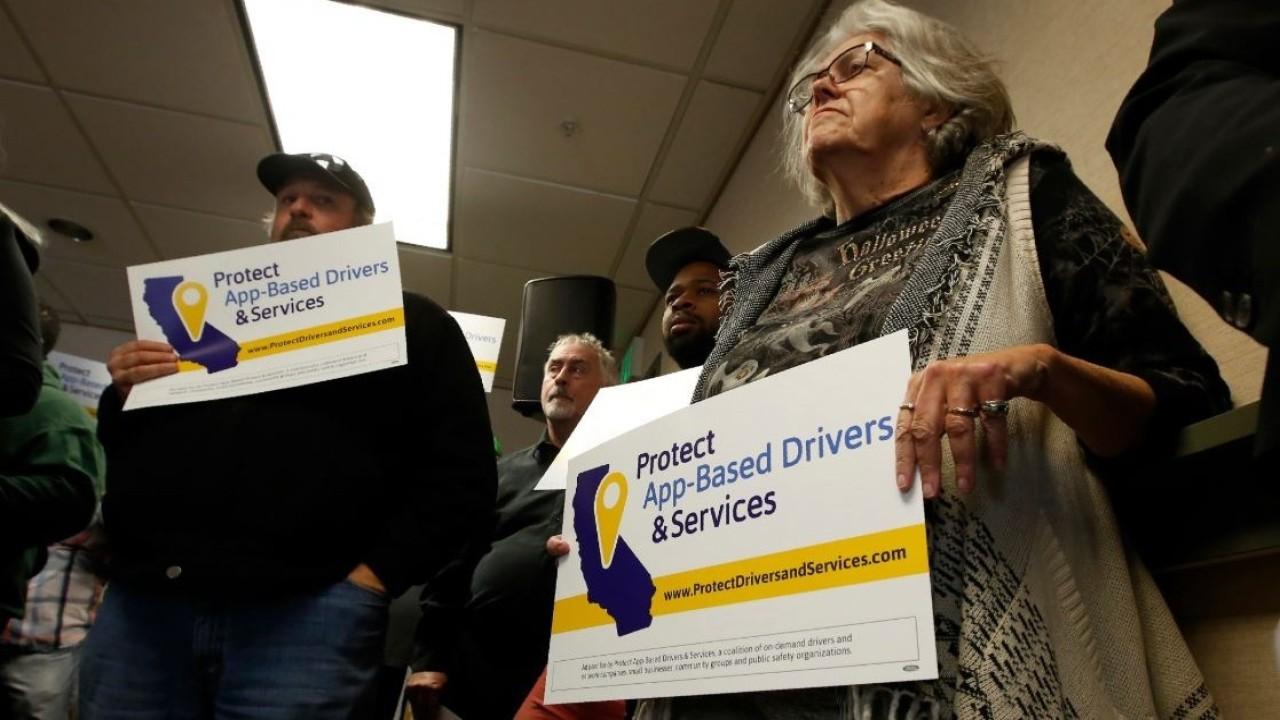Gig workers facing extreme new competition in coronavirus pandemic, severe unemployment
They make a living driving people to airports, picking out produce at grocery stores or providing childcare for working parents
With the coronavirus pandemic pummeling the global economy and U.S. unemployment reaching heights not seen since the Great Depression, gig workers are clamoring for jobs that often pay less while facing stiff competition from a crush of newly unemployed workers also attempting to patch together a livelihood - all while trying to avoid contracting the coronavirus themselves.
In America today, there are an estimated 1.5 million so-called gig workers who make a living driving people to airports, picking out produce at grocery stores or providing childcare for working parents. Theirs had already been a precarious situation, largely without safeguards such as minimum wage, unemployment insurance, workers compensation and health and safety protections.
U.S. unemployment fell to 11.1 percent in June, a Depression-era level that, while lower than last month, could worsen after a surge in coronavirus cases has led states to close restaurants and bars.
GET FOX BUSINESS ON THE GO BY CLICKING HERE
Upwork, a website that connects skilled freelance workers with jobs, has seen a 50 percent increase in signups by both workers and employers since the pandemic began, including spikes in jobs related to ecommerce and customer service, said Adam Ozimek, chief economist at Upwork.
“When you need to make big changes fast, a flexible workforce helps you,” he said.
Maya Pinto, a researcher at the National Employment Law Project, said temporary and contract work grew during Great Recession and she expects that many workers will seek such jobs again amid the current crisis.
But increased reliance on temporary and contract work will have negative implications on job quality and security because it “is a way of saving costs and shifting risk onto the worker,” Pinto said.
It’s difficult to assess the overall picture of the gig economy during the pandemic since some parts are expanding while others are contracting. Grocery delivery giant Instacart, for instance, has brought on 300,000 new contracted shoppers since March, more than doubling its workforce to 500,000. Meanwhile, Uber’s business fell 80 percent in April compared with last year while Lyft’s tumbled 75 percent in the same period.
| Ticker | Security | Last | Change | Change % |
|---|---|---|---|---|
| UBER | UBER TECHNOLOGIES INC. | 81.87 | -0.25 | -0.30% |
| LYFT | LYFT INC. | 19.36 | +0.04 | +0.23% |
For food delivery apps, it’s been a mixed bag. Although they are getting a bump from restaurants offering more takeout options, those gains are being offset by the restaurant industry’s overall decline during the pandemic.
Gig workers are also jockeying for those jobs from all fronts. DoorDash launched an initiative to help out-of-work restaurant workers sign up for delivery work. Uber’s food delivery service, Uber Eats, grew 53 percent in the first quarter and around 200,000 people have signed up for the app per month since March — about 50 percent more than usual.
“Drivers are definitely exploring other options, but the issue is that there’s 20 or 30 million people looking for work right now,” said Harry Campbell, founder of The Rideshare Guy. “Sometimes I joke all you need is a pulse and a car to get approved. But what that means is it’s easy for other people to get approved too, so you have to compete for shifts.”
Some workers in the gig economy find it makes more sense to stay home and collect unemployment — a benefit they and other gig workers hadn’t qualified for before the pandemic. They are also eligible to receive an additional $600 weekly check from the federal government, a benefit that became available to workers who lost their jobs during the pandemic. Taken together, that’s more than what many ride-hailing drivers were making before the pandemic, Campbell said.
But that $600 benefit will expire at the end of July, and the $2 trillion government relief package that extended unemployment benefits to gig workers expires at the end of the year.
CLICK HERE TO READ MORE ON FOX BUSINESS
“So many drivers are going to have to sit down and decide, do I want to put myself at risk and my family at risk once I’m not getting the government assistance?” Campbell said.
The Associated Press contributed to this report.






















